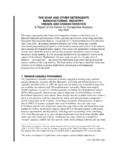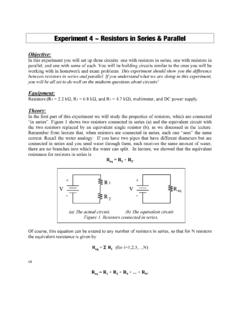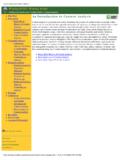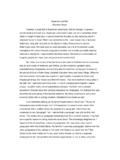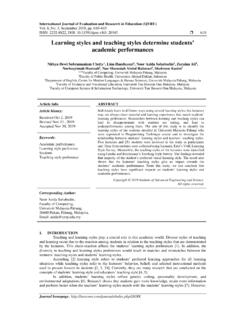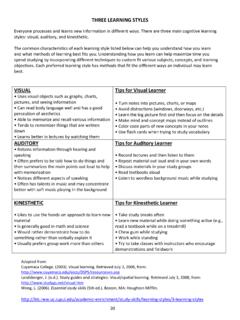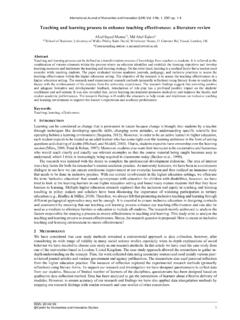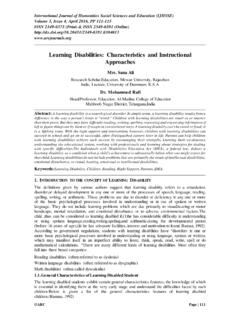Transcription of Learning Style Assessment - University of Missouri–St. Louis
1 Learning Style Assessment Read each statement and select the appropriate number response as it applies to you. Often (3) Sometimes (2) Seldom Never (1) Visual Modality ____ I remember information better if I write it down. ____ Looking at the person helps keep me focused ____ I need a quiet place to get my work done. ____ When I take a test, I can see the textbook page in my head. ____ I need to write down directions, not just take them verbally. ____ Music or background noise distracts my attention from the task at hand. ____ I don t always get the meaning of a joke.
2 ____ I doodle and draw pictures on the margin of my notebook page. ____ I have trouble following lectures. ____ I react very strongly to colors. ____ Total Auditory Modality ____ My papers and notebooks always seem messy. ____ When I read, I need to use my index finger to track my place on the line. ____ I do not follow written directions well. ____ If I hear something, I will remember it. ____ Writing has always been difficult for me. ____ I often misread words from the text- ( them for then ). ____ I would rather listen and learn than read and learn.
3 ____ I m not very good at interpreting an individual s body language. ____ Pages with small print or poor quality copies are difficult for me to read. ____ My eyes tire quickly, even though my vision check-up is always fine. ____ Total kinesthetic /Tactile Modality ____ I start a project before reading the directions. ____ I hate to sit at a desk for long periods of time. ____ I prefer first to see something done and then to do it myself. ____ I use the trial and error approach to problem-solve. ____ I like to read my textbook while riding an exercise bike.
4 ____ I take frequent study breaks. ____ I have a difficult time giving step-by-step instructions. ____ I enjoy sports and do well at several types of sports. ____ I use my hands when describing things. ____ I have to re-write or type my class notes to reinforce material. ____ Total Total the score for each section. A score of 21 points or more in a modality indicates a strength in that area. The highest of the 3 scores indicates the most efficient method of information intake. The second highest score indicates the modality which boosts the primary strength.
5 For example, a score of 23 in visual modality indicates a strong visual learner. Such a learner benefits from the text, from filmstrips, charts, graphs, etc. If the second highest score is auditory, then the individual would benefit from audio tapes, lectures, etc. If you are strong kinesthetically then taking notes and rewriting class notes will reinforce information. Characteristics of Learning Styles Three of your senses are primarily used in Learning , storing, remembering, and recalling information.
6 Your eyes, ears, and sense of touch play essential roles in the way you communicate, perceive reality and relate to others. Because you learn from and communicate best with someone who shares your dominant modality, it is a great advantage for you to know the characteristics of visual, auditory and kinesthetic styles and to be able to identify them in others. Visual Mind sometimes strays during verbal activities Observe rather than acts or talks Likes to read Usually a good speller Memorizes by seeing graphics or pictures Not too distractible Finds verbal instruction difficult Has good handwriting Remembers faces Uses advanced planning Doodles Quiet by nature Meticulous, neat in appearance Notices details Auditory Talks to self.
7 Aloud Enjoys talking Easily distracted Has difficulty with written directions Likes to be read to Memorizes sequentially Enjoys music Whispers to self while reading Distracted by noise Hums or sings Outgoing by nature Enjoys listening activities kinesthetic Likes physical rewards In motion most of the time Likes to touch people while talking Taps pencil or foot when studying Enjoys doing activities Reading not a priority Poor speller Likes to solve problems by physically working through them Will try new things Outgoing by nature; expresses emotions by physical means Uses hands while talking Dresses for comfort SOUND: Hints for the Auditory Learner General 1.
8 Say aloud the information to be learned/have someone read the information to you/read it into a tape recorder and replay it. 2. Read your work out loud. Summarize what you have read on tape. 3. Say words inside of your head silently. 4. Brainstorm ideas with others. Form study groups. 5. When possible, learn information through tapes, television, oral reports, rhymes, and songs, radio, lectures, book reviews, panel and group discussions, guest lectures, and oral questions and answers. 6. Use a straight-edge marker or guide to assist you in keeping your place while you are reading or working with printed materials.
9 7. Tape class lectures (Ask instructor for permission). 8. Meet with classmates before and/or after class to discuss material. Writing 1. Plan each sentence you want to write by saying it out loud or silently in your head. 2. Say each sentence several times. 3. Write each sentence as you say it, or talk into a tape recorder, dictating each sentence of your paragraph; then lay the tape back-one sentence at a time- and record your paragraph in writing. Spelling 1. Listen to the spelling of the word. 2. Say the word-then say each letter out loud.
10 3. Close your eyes and spell the word out loud; check your spelling. 4. Close your eyes and spell the word out loud again; checking your spelling. 5. Now write the word, trying to hear it in your mind. 6. Verbally review spelling words and lectures with a friend. Mathematics 1. Learn math while saying the concept, fact, theorem, etc., aloud. 2. Explain math problems, concepts, facts, etc., to yourself, relating the information out loud. 3. Use a tape recorder and replay the information. SIGHT: Hints for the Visual Learner General 1.
